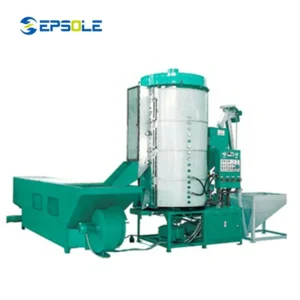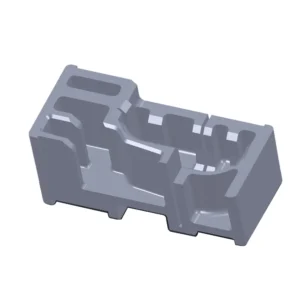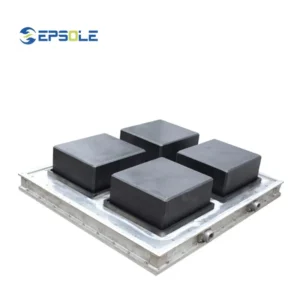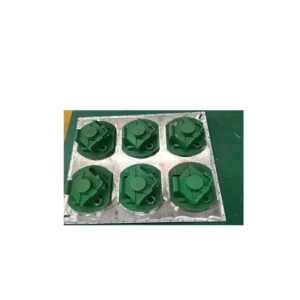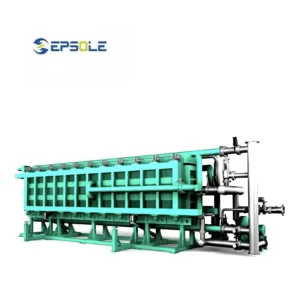Expanded Polystyrene (EPS), commonly known as foam, is a versatile material with countless applications. This comprehensive guide will delve into the fascinating world of EPS expansion, exploring the science behind it and the key factors influencing the process.
We’ll cover everything from raw materials and production techniques to the properties of expanded EPS and its diverse uses. Whether you’re a curious individual or a professional in the industry, this guide will provide valuable insights into the world of EPS expansion.
What Is EPS Expansion
EPS Expansion refers to the process of transforming small polystyrene beads into a lightweight, rigid foam material called Expanded Polystyrene (EPS).
- Starting Point: Tiny polystyrene beads, resembling small white pearls.
- The Process: These beads are subjected to heat and steam, causing them to expand significantly.
- Transformation: The expanded beads then fuse together to form a solid, interconnected structure with numerous tiny air pockets.
This expansion process gives EPS its unique properties, including:
- Lightweight: Due to the high air content.
- Excellent insulation: The air pockets within the foam provide excellent resistance to heat transfer.
- High impact resistance: Able to absorb shock effectively.
- Versatility: Can be easily molded into various shapes and forms.
This expanded form of polystyrene has a wide range of applications, from insulation in buildings to packaging materials for delicate goods.
How to Expand EPS
EPS expansion is a multi-step process that transforms tiny polystyrene beads into the lightweight, rigid foam we know.
Here’s a basic step flow of expanding EPS:
1. Pre-expansion:
Purpose: This crucial step prepares the polystyrene beads for further expansion.
Process:
- Bead Loading: Polystyrene beads are loaded into a pre-expander, either in batches or continuously.
- Heating and Pressurization: The pre-expander is sealed, and steam is introduced. This heat softens the beads and increases internal pressure.
- Expansion: The pentane (a hydrocarbon blowing agent) within the beads vaporizes due to the heat, causing them to expand significantly.
- Cooling: The expanded beads are then cooled to stabilize their size and prevent further expansion.
Key Factors:
- Temperature and Pressure: Precise control of these factors is crucial for consistent expansion and achieving the desired bead density.
- Steam Quality: The quality of the steam (moisture content) significantly impacts the expansion process.
2. Molding:
Purpose: This step shapes the expanded beads into the desired product.
Process:
- Bead Loading: Expanded beads are loaded into a mold cavity.
- Heating and Pressurization: The mold is closed and heated, typically using steam. This causes the beads to soften and fuse together.
- Cooling: The molded part is then cooled to solidify the EPS structure.
- Demolding: Once cooled, the molded part is removed from the mold.
3. Finishing (Optional):
Purpose: Depending on the application, further processing may be required.
Processes:
- Trimming: Removing excess material from the molded part.
- Cutting: Shaping the part to specific dimensions.
- Routing: Creating intricate shapes and designs.
- Surface Treatment: Applying coatings or treatments for improved aesthetics or performance.
Key Considerations in EPS Expansion:
- Bead Quality: The quality of the initial polystyrene beads significantly influences the final product’s properties.
- Equipment Maintenance: Proper maintenance of pre-expanders and molding equipment is essential for consistent and efficient production.
- Energy Efficiency: Optimizing the expansion process to minimize energy consumption is crucial for sustainability and cost-effectiveness.
- Safety: Ensuring the safe handling of steam, pentane, and other chemicals involved in the process is paramount.
By carefully controlling each step of the EPS expansion process, manufacturers can produce a wide variety of high-quality products with diverse properties and applications.
EPS Expansion Ratio
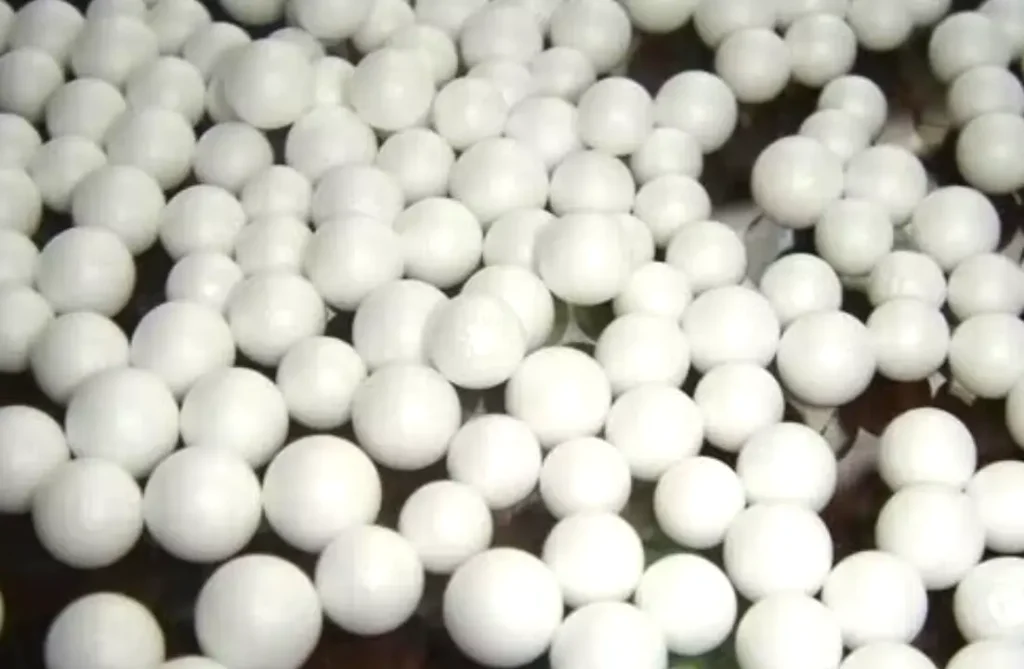
The EPS Expansion Ratio refers to the increase in volume of a polystyrene bead during the pre-expansion process.
Definition: It’s the ratio of the volume of the expanded bead to the volume of the original, unexpanded bead.
Significance:
- Density Control: The expansion ratio directly influences the density of the final EPS product. Higher expansion ratios result in lower density foams.
- Product Properties: The density, and therefore the expansion ratio, significantly affects the properties of the final EPS product, such as its insulation value, strength, and rigidity.
Factors Influencing Expansion Ratio:
- Bead Type: Different types of polystyrene beads have varying expansion characteristics.
- Pre-expansion Conditions: Factors like temperature, pressure, and steam quality within the pre-expander significantly impact the expansion ratio.
- Blowing Agent: The type and amount of blowing agent (typically pentane) in the beads also influence expansion.
Typical Expansion Ratios:
Expansion ratios for EPS can vary widely depending on the desired product properties and the specific manufacturing process. Typical ranges can be from 20 to 50 times the original bead volume.
By carefully controlling the expansion ratio, manufacturers can tailor the properties of the EPS foam to meet the specific requirements of different applications.
EPS Thermal Expansion
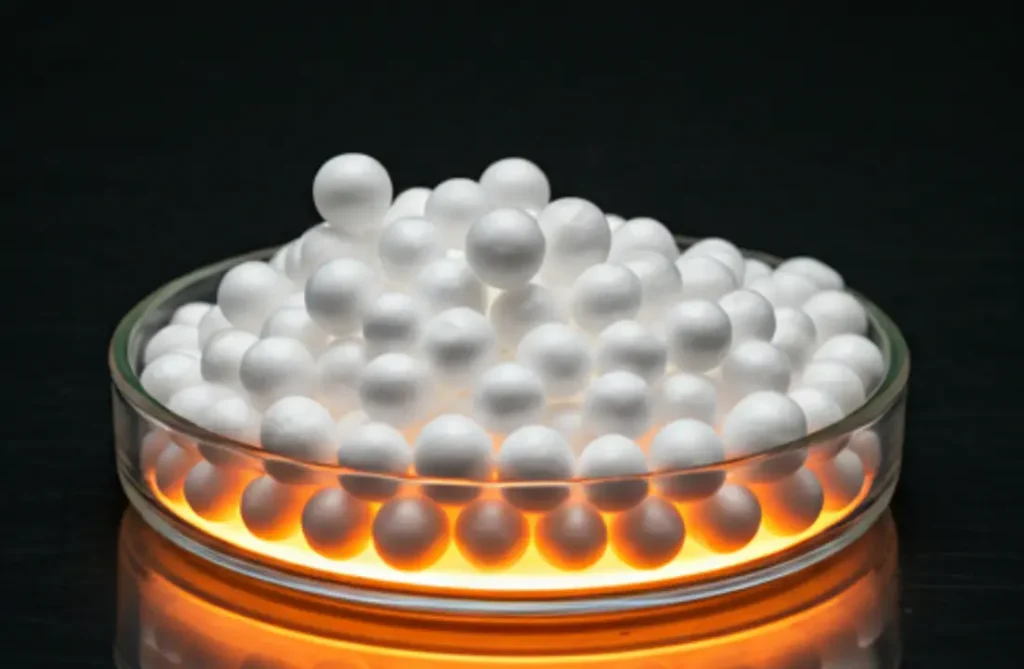
What is Thermal Expansion?
When a EPS material is heated, its molecules gain kinetic energy and begin to vibrate more vigorously. This increased molecular motion causes the material to expand slightly in all directions.
Thermal Expansion of EPS:
- EPS, like most materials, experiences thermal expansion.
- Coefficient of Thermal Expansion (CTE): This value quantifies the amount of expansion that occurs per unit change in temperature. EPS has a relatively low CTE, meaning it expands less than many other materials when subjected to temperature changes.
Impact of Thermal Expansion on EPS:
- Dimensional Changes: In applications where precise dimensions are critical, the thermal expansion of EPS needs to be considered.
- Stress in Structures: If EPS is used in conjunction with other materials with different CTEs, differential expansion can occur. This can lead to stresses within the structure, potentially causing cracks or other forms of damage.
Addressing Thermal Expansion:
- Design Considerations: Engineers and designers need to account for the thermal expansion of EPS during the design phase of any project.
- Construction Techniques: Proper construction techniques, such as leaving expansion joints, can help to accommodate the movement caused by thermal expansion.
- Material Selection: Choosing materials with similar CTEs for use in conjunction with EPS can minimize the impact of differential expansion.
Key Points:
- EPS exhibits thermal expansion, though to a relatively small degree.
- The CTE of EPS is a crucial factor to consider in applications where dimensional stability is important.
- Proper design and construction practices are essential to mitigate the effects of thermal expansion in EPS applications.
Conclusion
Expanded Polystyrene (EPS) is a versatile material with countless applications. In this comprehensive guide, we’ll delve into the fascinating world of EPS expansion, exploring the process, key factors influencing expansion, and the diverse applications of this lightweight yet robust material.
Whether you’re an industry professional or simply curious about this remarkable substance, this guide will provide you with valuable insights.
Ready to expand your EPS production capabilities? Contact us today to learn more about our high-quality EPS machines and explore how we can help you achieve your production goals.

